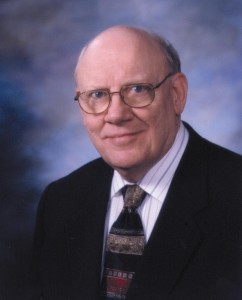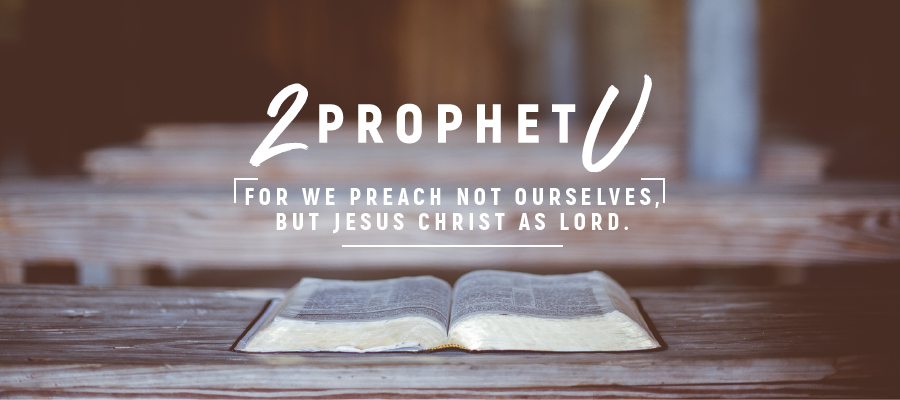The Preaching Of The Cross
It was said of Charles Spurgeon that, no matter what text he chose, he moved as quickly as possible across country to the cross of Jesus Christ. This is a good example for us to follow.
Spurgeon said to his ministerial students: “More and more am I jealous lest any views upon prophecy, church government, politics, or even systematic theology, should withdraw one of us from glorying in the cross of Christ. Salvation is a theme for which I would enlist every holy tongue.”
“Get them in sight of Calvary,” said A. J. Gossip in his lectures on preaching. “Pause there . . . hushed and reverent; enable them to look, to see it, make it real to them, not just an old tale that has lost its wonder and its stab, but a tremendous awful fact.”
Its Wonder And Its Stab
Calvary is not only the place of atonement; it is also the place of amazement. Are we so familiar with the cross that we no longer pause to wonder and to worship? Are we able to explain Calvary so completely that no mysteries remain?
The wonder of the cross is itself a worthy theme for ministry. In fact, the cross is the theme of heaven’s worship (Rev. 5)! The preacher who handles this topic academically, whose heart is not moved by what the Saviour did, is not likely to move anybody else.
“There is something infinitely profounder than pathos in the death of Jesus,” wrote Oswald Chambers. “There is a mystery we cannot begin to touch.”
But there is also the “stab” of the Calvary message. If you have not recently read A. W. Tozer’s essay, “The Old Cross and the New,” take time to do so. You will find it in his book Man: The Dwelling Place of God (Christian Publ.), as well as in The Best of A. W. Tozer (Baker).
A comfortable church does not want a cross that stabs and kills, and yet that is exactly what the cross does to those who understand and apply its message. We want Christ to die for us, but we do not want to die with Christ. We linger in Romans 5 and neglect Romans 6 and 7. We rejoice at the message of substitution, but we rebel at the truth of identification.
A crossless Gospel is a powerless Gospel (Rom. 1: 16); and a crossless Christian is a powerless Christian. Paul gloried in the cross (Gal. 6:14), while believers today rejoice because they have escaped the cross!
The Whole Bible
The death of the Son of God is a theme that runs like a crimson cord throughout the whole Bible. Whether in type, psalm or prophecy, the suffering Saviour is found from Genesis 3:15 to the end of Revelation. (See The Master Theme of the Bible by J. Sidlow Baxter, published by Tyndale.)
The theme of “sacrifice” ties all of Scripture together and emphasizes that “salvation is of the Lord.” Key Old Testament texts would be: Gen. 3:15; Gen. 22; Ex. 12; Lev. 16; Num. 22; Ps. 22 and 69; and Isa. 53. When you turn to the New Testament, the references to the cross are many; and don’t forget the many “Lamb” passages in the Book of Revelation.
Make it practical
In Scripture, the death of Jesus Christ is not simply an event in history that has great theological meaning. Paul said, “I am crucified with Christ” (Gal. 2:20). The cross was a part of his everyday experience and had a bearing on all that he did.
The New Testament epistles make it clear that the message of the cross is practical. You cannot come to the cross by faith and live just as you please ever after.
It is significant that crucifixion is one death we cannot perform on ourselves. Men may shoot themselves, poison themselves, drown themselves, gas themselves, and hang themselves; but they cannot crucify themselves. All they can do is yield, which is what Rom. 6 and Rom. 12:1, 2 are all about.
A Message For The World
If you preach the cross, you must preach world missions; for He died, not for our sins only, but “for the sins of the whole world” (I John 2:2). Dr. Charles Koller called the cross “the plus sign on the skyline,” and indeed it was.
The cross reconciles sinners to God and saved people to one another. The message of the church is one of reconciliation, not condemnation; and the good news of the Gospel is for the whole world. “For God so loved the world . . ,” is the clear message of Calvary.
“The preaching of the cross” is much more than preaching about the cross. It means bringing the cross to bear upon ever doctrine of the Word, every admonition, every promise. It means seeing God’s truth through the cross and the empty tomb.
Some Christian missionaries once visited Mahatma Gandhi, and he asked them to sing him one of their hymns. “Which one?” they asked. He replied, “Sing for me the one that best expresses what you are preaching.”
It took them but a moment to decide; and together they sang “When I Survey the Wondrous Cross.” They made the right choice.
©2002 WWW Used by permission. This article is copyrighted by the author and is for your individual use. Reproduction for any other purpose is governed by copyright laws and is strictly prohibited. This material originally appeared in Prokope, January-February 1989.

Dr. Warren Wiersbe (1929-2019) was an internationally known Bible teacher, author, and conference speaker. He graduated in 1953 from Northern Baptist Theological Seminary in Lombard, Illinois. While attending seminary, he was ordained as pastor of Central Baptist Church in 1951 and served until 1957. From September 1957 to 1961, Wiersbe served as Director of The Literature Division for Youth for Christ International. From 1961 to 1971 he pastored Calvary Baptist Church of Covington, Kentucky south of Cincinnati, Ohio. His sermons were broadcast as the “Calvary Hour” on a local Cincinnati radio station. From 1971 to 1978, He served as the pastor of Moody Church in Chicago 1971 to 1978. While at Moody Church he continued in radio ministry. Between August 1979 and March 1982, he wrote bi-weekly for Christianity Today as “Eutychus X”, taught practical theology classes at Trinity Evangelical Divinity School in Deerfield, Illinois, and wrote the course material and taught a Doctor of Ministry course at Trinity and Dallas Seminary. In 1980 he transitioned to Back to the Bible radio broadcasting network where he worked until 1990. Dr. Wiersbe became Writer in Residence at Cornerstone University in Grand Rapids and Distinguished Professor of Preaching at Grand Rapids Theological Seminary. In his lifetime, Dr. Wiersbe wrote over 170 books—including the popular Be series, which has sold over four million copies. Dr. Wiersbe was awarded the Gold Medallion Lifetime Achievement by the Evangelical Christian Publishers Association (ECPA).
 Warren Wiersbe Podcast
Warren Wiersbe Podcast
- An error has occurred, which probably means the feed is down. Try again later.
 Sherwood Baptist Podcast
Sherwood Baptist Podcast
- An error has occurred, which probably means the feed is down. Try again later.
